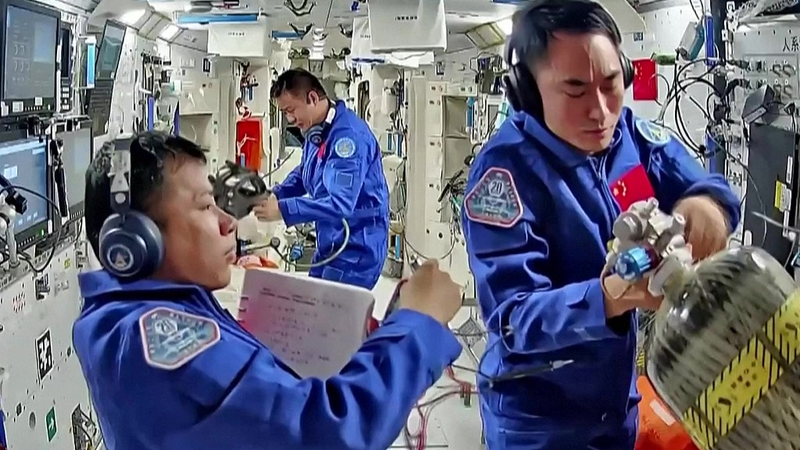On Friday, more than 300 students, scientists and government officials gathered at the Hungarian Academy of Sciences for a one-of-a-kind space science Q&A session with crew members of the China Space Station.
Dubbed the “Tiangong Classroom,” the event was co-hosted by the China Manned Space Agency, the Chinese Embassy in Hungary and the Hungarian Academy of Sciences, aiming to deepen collaboration in aerospace, education and innovation.
During the session, Shenzhou-20 crew members Chen Dong, Chen Zhongrui and Wang Jie answered pre-submitted questions and showcased zero-gravity experiments in a pre-recorded video, captivating the audience with real examples from orbit.
Students from over 100 Hungarian schools submitted questions on topics ranging from exercise routines in microgravity to the effects of weightlessness on the body. Many participants were thrilled to see their own questions addressed by astronauts in space.
Pannon Space Technologies founder and team leader Tamas Pinter Keresztes, 16, from Zrinyi Ilona High School, asked about the strength-training equipment used aboard the station. “The chance to connect our experiment idea with astronauts in orbit is incredibly inspiring,” he said.
Sara Lovati, 15, from ELTE Trefort Agoston High School, inquired how microgravity impacts the spinal column. “I love astronomy and hope to study astrophysics someday,” she added after hearing the astronauts discuss how they adapt to life in weightlessness.
In Szekesfehervar, 15-year-old Bence Kovacs focused on circadian rhythms and asked how the lack of a natural day-night cycle affects the human body. “I’ve been following China’s space program online and wish the crew safe and successful experiments,” he remarked.
The student questions were reviewed anonymously by a panel of scientists, including Adam Boldog of the Svabhegy Observatory. “We looked for originality, scientific clarity and relevance to microgravity,” he explained, noting the challenge of selecting dozens of top questions from hundreds of submissions.
Ferenc Hudecz, vice president of the Hungarian Academy of Sciences, highlighted the event’s significance: it showcases China’s emergence as a global leader in space research and its commitment to inspiring the next generation of scientists.
Chinese Ambassador to Hungary Gong Tao called the session a new chapter in China-Hungary aerospace cooperation. “Only through open collaboration can we reach higher and tackle more daring scientific challenges,” he said.
Launched on April 24, the three-member Shenzhou-20 crew is on a six-month mission aboard the China Space Station, conducting experiments that advance our understanding of life and science in microgravity.
Reference(s):
cgtn.com




